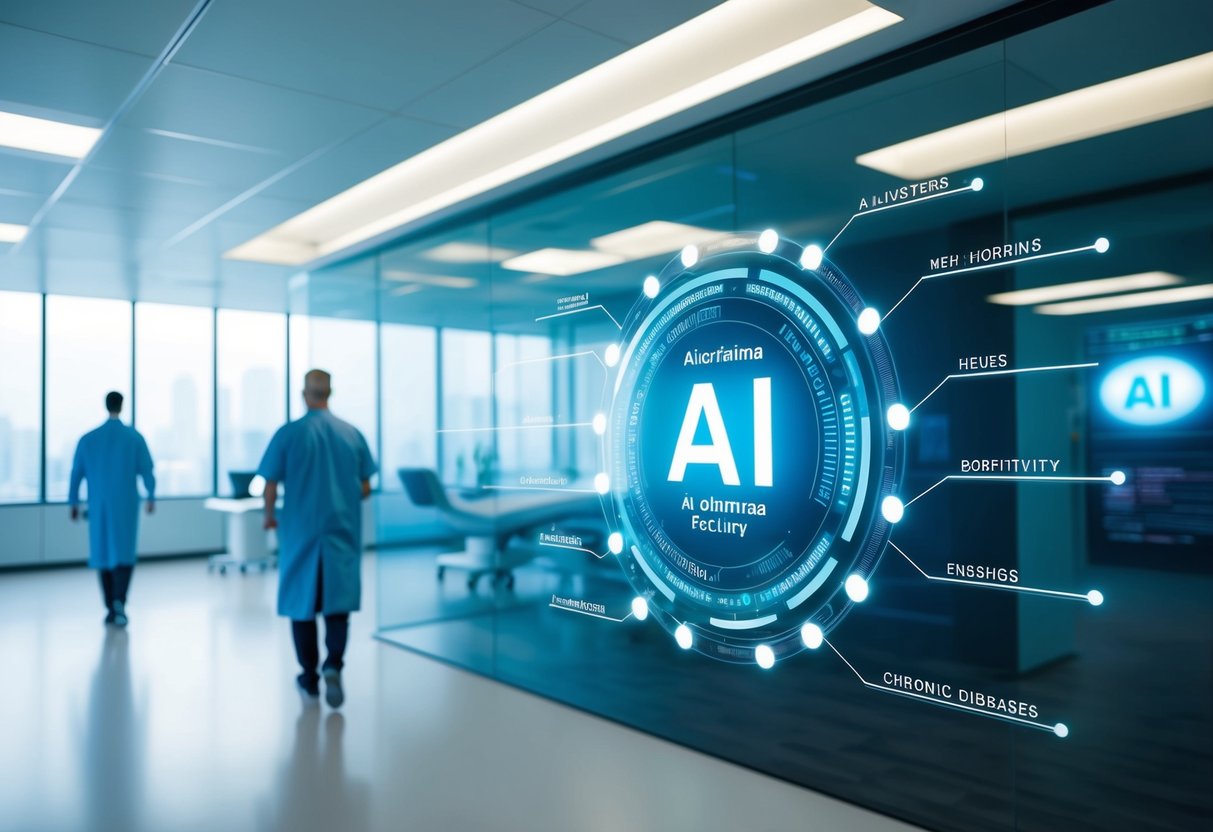
Potential of AI in Enhancing Health Management
Predictive analytics, powered by AI, plays a crucial role in transforming health management. By examining data trends, AI predicts potential health risks, enabling interventions before conditions escalate. This proactive approach reduces the burden on healthcare systems and improves patient care.
AI can automate routine tasks, freeing healthcare professionals to focus on patient-centered activities. This increases the ability to manage chronic diseases more effectively. Personalized treatment plans using AI consider a patient’s complete medical profile, resulting in targeted therapies.
The integration of AI applications in healthcare boosts operational efficiency and fosters data-driven decisions. AI’s potential to revolutionize health management lies in its capacity to offer advanced predictive insights and streamline patient care.
Technological Innovations in AI: Tools and Algorithms
Artificial intelligence brings transformative innovations to healthcare, particularly in the early detection of chronic diseases. The integration of AI algorithms with machine learning and deep learning enhances diagnostic precision while natural language processing and image recognition streamline and refine the identification of disease markers.
Advancements in Machine Learning and Deep Learning
Machine learning (ML) and deep learning underpin many of the recent advancements in AI technologies. These systems analyze vast amounts of medical data to identify patterns indicative of chronic conditions.
Deep learning, with its convolutional neural networks, excels at processing complex signals such as medical imaging. This allows for early detection of diseases like cancer or heart conditions by recognizing subtle changes that might be missed by human oversight.
Such models continuously improve by training on diverse datasets. This adaptability ensures that they remain accurate and relevant as new data becomes available. By offering predictive insights, these tools enable healthcare providers to intervene earlier, significantly altering the trajectory of chronic diseases.
Role of NLP and Image Recognition in Disease Detection
Natural language processing (NLP) plays a vital role in analyzing medical records and extracting valuable insights into patient histories. It scans unstructured data, efficiently identifying potential risk factors and symptoms.
AI-fueled image recognition also provides substantial assistance in diagnostic processes. By rapidly examining medical imagery, it identifies anomalies that could indicate chronic diseases. Used effectively, these tools reduce diagnostic time and aid in the precision of identifying afflictions like diabetes or hypertension.
Continued innovation in these areas strengthens the partnerships between technology and healthcare professionals, paving the way for improved patient outcomes and preventative care strategies.
AI’s Role in Early Detection of Specific Diseases

AI’s integration into healthcare has made significant strides in identifying chronic conditions earlier and more accurately. It plays a pivotal role in increasing diagnostic precision and enabling timely intervention for diseases such as cancer, diabetes, and cardiovascular illnesses.
Case Studies: Cancer, Diabetes, and Heart Diseases
AI technologies are transforming the early detection process for cancer by analyzing vast amounts of medical imaging data to identify malignant patterns that may be missed by human eyes. Algorithms trained on large datasets have shown promise in detecting breast, lung, and skin cancers at earlier stages, which are crucial for successful treatment outcomes.
In diabetes, AI aids in early detection by processing patterns in patient data such as continuous glucose monitoring and other clinical markers. This facilitates the prediction of an individual’s risk of developing the disease, allowing for timely lifestyle and medical interventions to prevent progression.
For cardiovascular diseases, AI systems analyze electrocardiograms, MRI scans, and other diagnostic tools to detect abnormalities indicating potential heart conditions. Timely identification of these problems can lead to preventive measures, helping to reduce the incidence of severe heart issues.